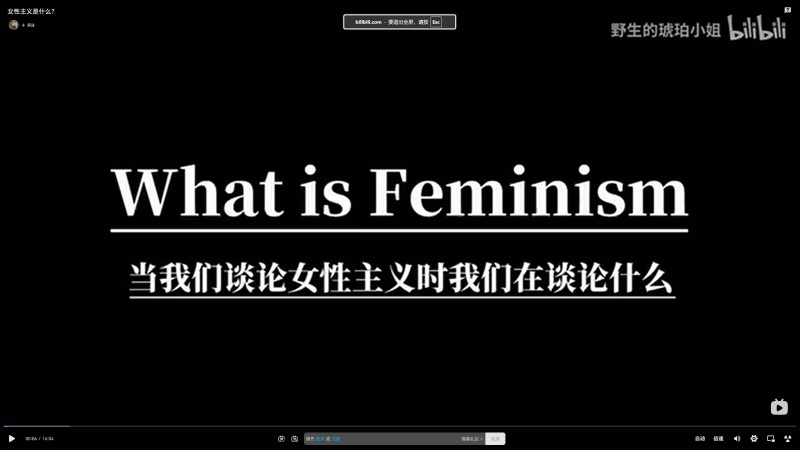This isn't her mother's feminism
Video Description
In this TEDWomen talk, Courtney E. Martin reflects on the evolving meaning of feminism across generations. Through personal narrative and cultural critique, she explores three paradoxes that define her generation’s feminist identity, emphasizing the tension between tradition and innovation, idealism and pragmatism.
When Courtney E. Martin takes the TEDWomen stage, she speaks not just as an individual but as a voice for an entire generation grappling with what feminism means in the 21st century. Her talk’s provocative title, “This isn’t her mother’s feminism,” serves as both acknowledgment and declaration—a recognition of the feminist legacy inherited from previous generations and an assertion of the need to forge new paths. Through her thoughtful exploration of three central paradoxes, Martin illuminates the complex terrain that contemporary feminists must navigate.
The first paradox Martin identifies centers on the intergenerational tension within feminism itself. She articulates the delicate balance her generation must strike between honoring the monumental achievements of their feminist predecessors and creating space for new definitions and strategies. This is not a simple matter of rebellion or rejection. Martin deeply appreciates that her mother’s generation fought for fundamental rights—the right to vote, to work, to control their own bodies—battles that laid the groundwork for today’s freedoms. Yet she also recognizes that the challenges facing contemporary women require different analytical tools and approaches.
What makes this generational paradox particularly poignant is the emotional complexity it entails. Young feminists often find themselves in the uncomfortable position of critiquing frameworks created by women they admire and respect. How does one point out the limitations of second-wave feminism’s focus on white, middle-class women’s experiences without diminishing the courage and sacrifice of those who fought under that banner? How does one advocate for trans-inclusive feminism while acknowledging that earlier generations operated within different conceptual frameworks? Martin suggests that the answer lies not in choosing sides but in embracing the productive tension between gratitude and innovation.
The second paradox Martin explores revolves around the relationship between individual empowerment and collective action. Contemporary feminism, she observes, is saturated with language of personal choice and individual agency—“girl power,” “lean in,” “be your own boss.” While this emphasis on personal empowerment has undoubtedly helped countless women build confidence and pursue their ambitions, Martin warns of its potential shadow side. When structural inequalities are reframed as personal challenges to overcome, the burden of change shifts from systems to individuals.
Martin illustrates this paradox with striking clarity. When a woman encounters the glass ceiling, the popular feminist discourse often encourages her to “negotiate better,” “build her brand,” or “find her voice.” While these strategies have value, they sidestep a fundamental question: why should women need to work twice as hard for equal recognition? The focus on individual solutions can inadvertently perpetuate the very systems feminism seeks to dismantle by suggesting that inequality is a problem of insufficient personal effort rather than institutional bias.
This tension between individual and collective approaches reflects broader cultural shifts toward neoliberal individualism. Martin argues that contemporary feminism must resist the seductive simplicity of purely individualistic solutions while still valuing personal agency. The challenge is to create frameworks that empower individuals while maintaining focus on systemic change—to celebrate the woman who breaks through the glass ceiling while working to remove the ceiling altogether.
The third paradox, perhaps the most philosophically complex, concerns the tension between idealism and pragmatism. Martin’s generation was raised on contradictory messages: told they could “be anything” while simultaneously confronting persistent gender inequalities. This gap between promise and reality could easily breed cynicism, yet Martin advocates for a more nuanced response—one that maintains idealistic vision while engaging pragmatically with imperfect realities.
This paradox manifests in countless everyday decisions feminists face. Should one work for a company with problematic gender policies in order to change it from within, or boycott such institutions entirely? Is it better to support imperfect feminist candidates who can win elections, or maintain ideological purity at the risk of political irrelevance? Martin suggests that wisdom lies not in resolving these tensions but in learning to hold them productively—to be, in her words, “idealistic enough to maintain vision and pragmatic enough to make progress.”
Throughout her talk, Martin weaves in the crucial theme of intersectionality, though she doesn’t always name it explicitly. She acknowledges that her mother’s feminism, largely shaped by and for white, middle-class, heterosexual women, cannot adequately address the diverse experiences of contemporary women. Today’s feminism must grapple with how race, class, sexuality, gender identity, disability, and other factors create unique configurations of privilege and oppression.
This commitment to intersectionality is not merely an academic exercise or a nod to political correctness. Martin understands that feminism’s vitality depends on its ability to speak to and for all women, not just those who fit a particular mold. This requires constant self-examination, a willingness to decenter one’s own experience, and the humility to listen to voices from the margins. It means recognizing that a feminism that liberates only some women while leaving others behind is not truly liberatory.
Martin also addresses the digital revolution’s impact on feminist organizing and discourse. Social media has democratized feminist conversation, allowing previously marginalized voices to reach global audiences and enabling rapid mobilization around issues. Hashtag campaigns can raise awareness about sexual assault, workplace discrimination, or reproductive rights within hours. Online communities provide support and solidarity for women who might otherwise feel isolated.
Yet Martin also recognizes the limitations and dangers of digital feminism. Online harassment disproportionately targets feminist voices, particularly women of color. The speed of social media can flatten complex issues into simplistic slogans. “Clicktivism” can create an illusion of action without producing meaningful change. Echo chambers can reinforce existing beliefs rather than challenging them. Martin calls for thoughtful engagement with digital tools, using them to amplify feminist messages while remaining grounded in real-world organizing and relationship-building.
What makes Martin’s analysis particularly valuable is her refusal to offer easy answers. She doesn’t claim to have resolved the paradoxes she identifies. Instead, she invites her audience into a space of productive uncertainty, where complexity is acknowledged rather than avoided. This approach itself represents a departure from earlier feminist frameworks that often sought comprehensive theories to explain women’s oppression. Martin’s generation seems more comfortable with multiplicity, contradiction, and ongoing negotiation.
The implications of Martin’s talk extend beyond feminism to social movements more broadly. Her insights about balancing tradition and innovation, individual and collective action, idealism and pragmatism speak to universal challenges faced by those seeking social change. How do movements honor their histories while adapting to new contexts? How do they maintain radical vision while engaging with incremental progress? These questions resonate across struggles for racial justice, economic equality, environmental sustainability, and beyond.
Martin’s talk also serves as a response to common criticisms of contemporary feminism—that it has become fragmented, individualistic, or irrelevant. Far from being directionless, Martin shows that young feminists are engaged in sophisticated thinking about strategy, identity, and change. They are not abandoning the feminist project but expanding and complicating it. Their willingness to sit with paradox rather than forcing resolution may actually represent a more mature and sustainable approach to social transformation.
The generational aspect of Martin’s analysis deserves particular attention. By framing her talk around the relationship between her feminism and her mother’s, she highlights how social movements evolve across time. Each generation inherits both the victories and limitations of its predecessors. The task is not to wholesale reject or uncritically accept this inheritance but to thoughtfully assess what remains relevant and what needs updating.
This temporal dimension adds poignancy to Martin’s message. She speaks with awareness that just as she is reimagining her mother’s feminism, future generations will inevitably reimagine hers. This recognition breeds a certain humility—an understanding that no generation has a monopoly on feminist truth. It also suggests that feminism’s strength lies not in doctrinal purity but in its capacity for renewal and reinvention.
Ultimately, Martin’s talk is both diagnosis and prescription. She diagnoses the creative tensions animating contemporary feminism, refusing to smooth over contradictions in favor of false unity. But she also prescribes an approach: embrace paradox, hold complexity, balance competing goods. This is not a call for relativism or indecision but for a more sophisticated engagement with feminism’s challenges.
The lasting power of Martin’s message lies in its honesty and nuance. She neither romanticizes her generation’s feminism nor dismisses her mother’s. She acknowledges both the progress made and the distance still to travel. Most importantly, she models a way of thinking about feminism that is both critical and generous, rigorous and flexible. In doing so, she offers a vision of feminism that can evolve without losing its core commitment to justice and equality.
As we reflect on Martin’s talk years after its delivery, its relevance has only grown. The paradoxes she identified have intensified rather than resolved. The tension between honoring feminist history and creating new frameworks remains acute. The challenge of balancing individual empowerment with collective action has become more complex in an era of increasing economic inequality. The need to maintain idealism while engaging pragmatically with political realities feels especially urgent in these polarized times.
Martin’s invitation to embrace paradox rather than resolve it offers a valuable framework for contemporary feminist practice. It suggests that the way forward lies not in choosing between competing goods but in learning to hold multiple truths simultaneously. This capacity for complexity may be precisely what feminism needs to address the multifaceted challenges of our current moment. In acknowledging that this isn’t her mother’s feminism, Martin opens space for it to become something richer, more inclusive, and ultimately more transformative.
Video Info
Comments & Discussion
Discuss this video with other viewers
Join the Discussion
Discuss this video with other viewers
Loading comments...


